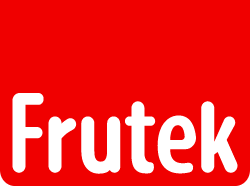How do we lift a baby on our shoulders?
1. photo – Hug, not squeeze
We don't grab a child with our fingers. We tell the child to turn around and accept them with an open palm and only then hug them.
2. photo – Turning into a hug with the palms
We stimulate the baby to move by gently putting our hands on the child's pelvis. Only when the body willingly turns, do we hug the torso.
3. photo – Soft turned palms
We play in the directions of movement and willingly redirect the movement. In this way, the child participates in a relaxed manner and uses only the appropriate muscle contractions for movement.
4. photo – Support that activates
Movement from the parent's pelvis enables the child's inner peace and sense of security. Activated support is clearly demonstrated by the child spreading their fingers and establishing their own control of standing up and maintaining a stable position. The position is useful for establishing proper activation of the body’s flexors and extensors. For burping, for keeping an eye on the world. For falling asleep.
Oh, but what about the head?
To develop head stability it is not necessary to hold it with conscious support and a well-established RFP®. The purpose and function of the head is not to rest. It is necessary to be careful and take care of the development of the cervical vertebrae function. By supporting the head while moving in straight directions and with the child's nose pointed at the ceiling, we are not providing healthy support. We are just assuring ourselves that we have safely put the baby down.
Any position of the head above the shoulders and pelvis, activates unhealthy patterns of maintaining stability and functioning. The control function of the head is impoverished in that case. When there are too many such holds during the day, we create too many unhealthy patterns compared to the necessary experiences for healthy development. With this, we direct the child into a rigid stance and do not activate developmental potentials, but initiate the development of reduced combinations of muscle tone regulation and dysfunctional setting of a stable skeletal task.
However, it is never allowed under any circumstances to lift a child upright without holding the head. A completely safe and anatomically developing position is when the child's nose points at the floor. It hangs down. With good support of the body with the palms and favorable directions of movement.
Aware of our care, intervention and relationship, as well as by consciously following the RFP®, we fully activate the given human development capacity, which enables the child to develop fully and healthy.
Andreja Semolic
Developmental founder of Pedokinetika®







